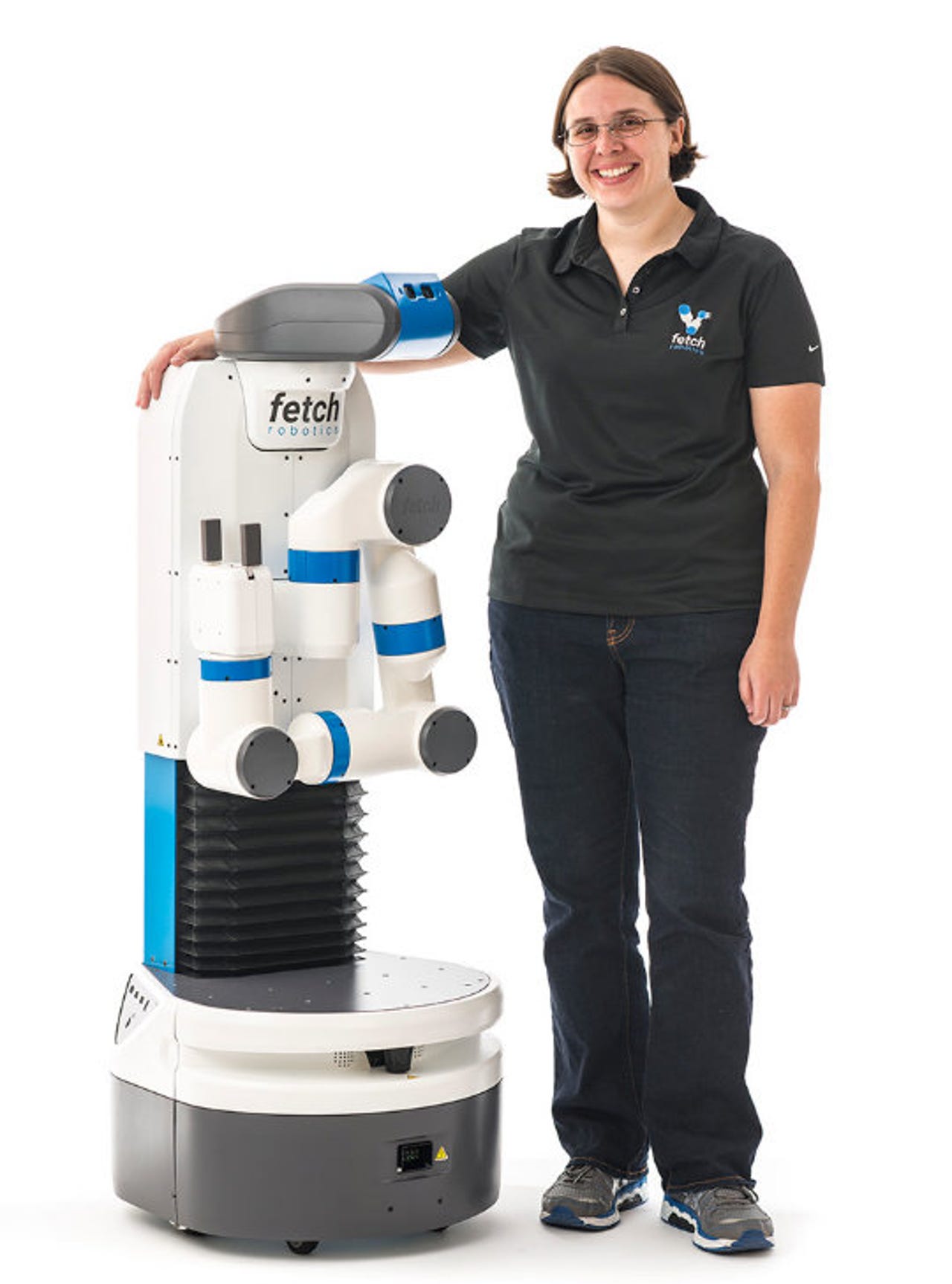New generation of robotics are industry-agnostic, open-source

In 1961, a robotic arm nicknamed Unimate joined the General Motors assembly line to perform basic welding tasks that were unpleasant and particularly dangerous for humans. The 4000-pound, six-axis robot ran off of magnetic tape.
"If you start with Unimate," says Melonee Wise, CEO of Fetch Robotics, an industrial robotics startup that received a $20M investment from SoftBank in June, "you see that industrial robots were developed and entered the workforce based on a very specific way of thinking."
Though subsequent robots would achieve greater dexterity, strength, and speed, Unimate served as the proto-model. For the next half century most industrial robots were caged-off behemoths that handled repeatable tasks adroitly but required costly physical reconfiguration to take on new tasks or change operating environments.
That remains the best (and only) approach to robotics for heavy manufacturing, and task-specific bots will continue to make our cars and, increasingly, electronic devices for the foreseeable future. The last five years or so, however, spurred by advances in sensing and processing and by significant shifts in consumer trends that have given rise to a thriving logistics industry, has seen a change in thinking away from task-specific industrial robots to more flexible platforms that are application- and even industry-agnostic.
Fetch Robotics, founded in 2014, represents a generation of companies developing adaptable platforms that are designed for use beyond the specific industries for which they were initially conceived. Not surprisingly, the company's approach has largely been informed by the impressive open-source robotics pedigree of Wise, who got her start at Willow Garage, developer of the now-ubiquitous open-source Robotic Operating System (ROS).
The Fetch system comprises a self-guiding robotic picker that can navigate a warehouse floor, identify products, and pick them off a shelf. Used in conjunction with Fetch's autonomous cart, nicknamed "Freight," the system can automate pick and place processes in fulfillment warehouses without requiring costly reconfiguration or setup."There's a 600,000 worker job gap in the logistics industry that companies can't fill today," Wise tells me. "That's only going to get worse. The biggest shift is the on-demand economy. Everyone wants what they want yesterday; they want time travel. Any way to shift your business to same day or next day delivery is to your advantage, and that takes a significant amount of manpower."
Logistics is a growing market and Fetch has been tactically smart to target it, but the striking thing about Fetch's approach is that it isn't developing its platform exclusively for order fulfillment; the move into logistics has been opportunistic.
"Longterm, Fetch robotics will be a company that makes solutions for different sectors," explains Wise.
Part of the way Fetch is ensuring that its system will outgrow its initial application is by making research models available to graduate schools and research institutions. That's a similar approach to the one Wise used at Willow Garage when she helped develop TurtleBot, an open-source mobile robotic platform that was designed to be developed into a useful system by the end users -- in essence, a blank slate.
Robotics
"Both platforms, Fetch and TurtleBot, are designed to have apps written on top of them. The goal with TurtleBot was to provide an entry level platform for students to learn robots on, to get them to a point where they're not writing visualization systems but working on higher level stuff like navigation and motion planning."
When you look at the Fetch platform through the same lens, you start to see the scope of the company's ambitions. "Once we get a strong foothold in logistics, we have our platform and we can start experimenting with elder care and hospitality and other things. Where are the next places we can go with the robot? We don't have to build a new robot to make the next MVP product. That's how we're thinking. And of course the robot will evolve over time, as all robots do, with new tech, new sensors."
The new growth in industrial robotics market, which is set to grow to $44.45B in sales by 2020, will be driven not by companies that make quality robots for different sectors, but by companies making highly flexible robots that empower outside developers to experiment and adapt systems to new industries. "Look, if someone wanted to develop a business out of developing applications for our robots, we'd absolutely sell them our robot," says Wise.